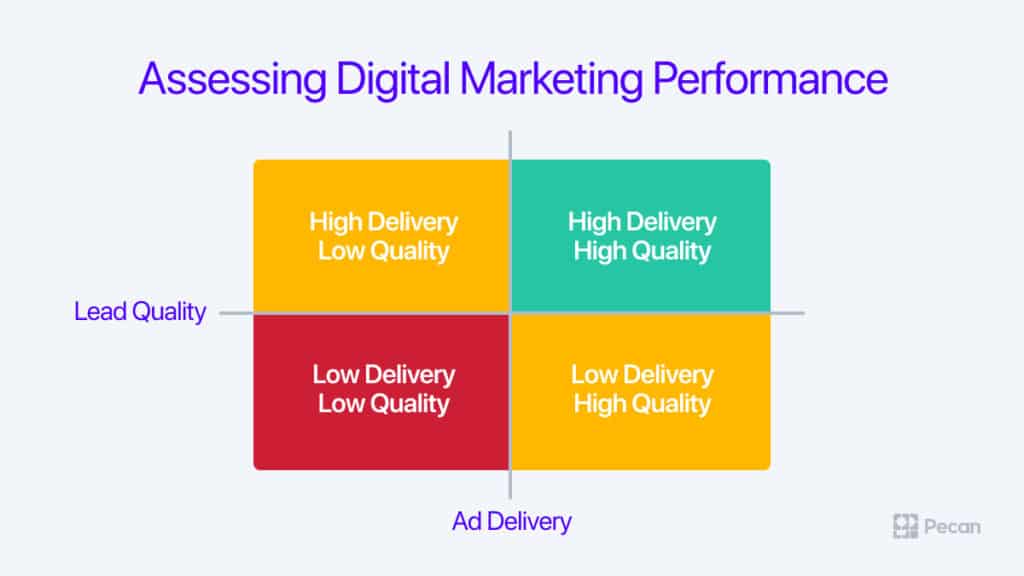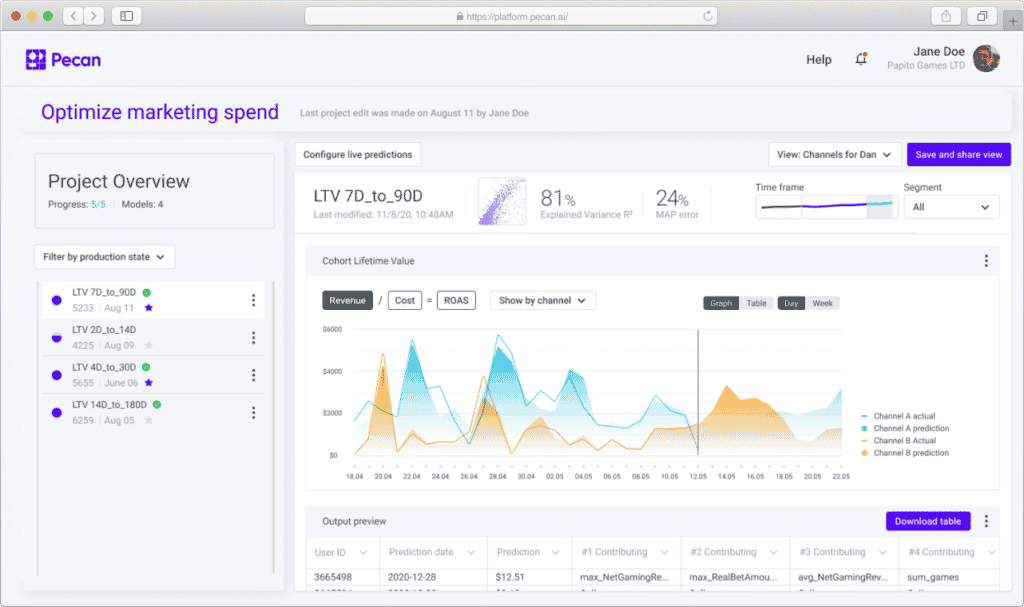How much has your advertising budget increased in the last three years? Has the increase in spend correlated with an increase in conversions?
If you advertise on social media and Google, your budget has probably swelled at least 25% or more — because those ads’ prices have gone up at least that much or more since 2019.
On top of increased cost, changes to social and search ad targeting are making it harder to find your perfect audience.
Facebook recently removed some methods of detailed targeting. Privacy changes for iOS users, plus the impending loss of third-party cookies in Chrome have undoubtedly complicated your digital strategy and execution.
All advertisers on these platforms face this challenge, but app and gaming companies, ecommerce destinations and direct-to-consumer companies are especially affected by this new reality because a very high percentage of their marketing budget is dedicated to digital. (You might also like to check out our guide to using these strategies effectively during difficult economic times.)
If you’re eager to find a solution, get ready to time travel — but not to escape to an easier time, even though that’s tempting! Instead, explore how predictive analytics can optimize the performance of your campaigns by giving you foresight. You can use current customer information (such as their behavioral and purchasing data) to design and deliver campaigns directly to the segment of audiences that will become ideal future customers.
Let’s take a look at how this future-driven approach could work for your business, amping up your campaigns well beyond what’s possible with methods anchored in the past.
Do your digital ads reach the right number and right kind of customers?
Assessing your digital marketing performance involves a couple of key criteria:
- Am I reaching enough potential customers?
- Are those potential customers high-quality leads, or in other words, people likely to buy my product or service? Are they engaging with and clicking on my ads, investigating what I have to offer, and eventually converting to long-term, valuable customers who will come back for more?
If the answer to both of these questions is yes, then you’re in the happy green quadrant of the graphic above. Your ad is being shown to plenty of people, and they’re exactly who you need to reach to grow your business. Congrats — you’re likely miles ahead of your competitors!
However, if you’ve found your way to this blog post, odds are good that you’re in the yellow or red zones. Things aren’t going as well as you’d like.
- Maybe you’re seeing great impressions and reach with high delivery, but only receiving low-quality leads and not getting the conversions you’d like (in whatever form is most valuable to you) from all those ad views.
- Maybe you’re getting some high-quality leads, but your ads aren’t being shown enough to find more of them due to low delivery.
- The red zone is probably the worst place to be: You’re trying hard to spend your budget to reach lots of the right people, but your campaign won’t deliver sufficiently to use what you’ve allocated. You’re suffering from both low delivery and low-quality leads.
In the yellow and red zones, you may be struggling to achieve your KPIs. Looking into the future will unleash new opportunities.
Common campaign optimization strategies aren’t all they’re clicked up to be
If you look at online sources about how to optimize your ad campaigns, you’ll see some common recommendations: Add more keywords. Create better ad copy. Let the platforms handle optimization for you.
While those are all fine ideas, your business’s own data is the key to moving your campaigns into that green zone of high delivery / high quality.
You actually have more information about your customers than the ad platforms do – much more; you know exactly what your customers have done since they’ve become customers. You have details about what they did after they clicked the ad and visited your website or app – how many times they’ve logged on, for how long, what content or features they’ve interacted with, and much more. You know which of those leads was truly high quality in the longer term. That extensive data can fuel predictive models that identify the best audience to target with your ads.
Why is that better? Ad platforms like Facebook and Google optimize ad delivery based on limited conversion events, where conversion is narrowly defined to include activities like interacting with your ad or clicking through to your website. Because of that narrow definition, the platforms focus on finding more people like those who completed the initial action that the platforms can track.
However, the platforms don’t have a window into what goes on later in your interactions with that customer. So they’re just as happy to send you more customers like the one who simply clicked on your site — but they aren’t prioritizing the kind of customer who clicks, then begins regularly spending money with your business.
Predictive models built on your more extensive, longer-term customer data can offer detailed, nuanced signals that can be shared with the platforms for use in optimization. Those signals can include greater depth about the customer behaviors you hope to see. That critical information boosts the ad platforms’ ability to deliver your ads to the right audience, finding you more of the high-quality leads that will actually convert into high-quality customers.
Predictive analytics for campaign optimization with Pecan
Anticipate customers’ future actions, beyond just 7 days
Another shortcoming of the optimization approach used by Facebook and Google is that they only look at conversions between 1 to 7 days after a user’s original click on your ad. What if a customer takes longer to convert? That customer’s information never gets used in your campaign optimization. But they could go on to be exactly the kind of customer you hope to attract in droves.
If you use predictive models built on your own granular data that includes your customers’ behavior and demographics, you’ll capture that late-converting customer’s characteristics in your optimization, and find more people like them to be included in your ad audience.
What the combination of predictive analytics + campaign optimization looks like
Using predictive modeling to improve campaign optimization is a fantastic strategy to increase your marketing ROI and move your campaigns toward that happy green zone of success. This strategy can work in a variety of industries, including direct-to-consumer companies, apps and gaming, insurance and financial services — really, anyone who advertises on the common digital ad platforms.
Let’s check out an example of how this method of campaign optimization could work for a mobile game company. Say, for example, that your ad campaigns are optimized with the end goal of getting people to install your app. You see a satisfactory level of success with that goal, hitting the number of installs you’d hoped to achieve. However, you spent $200 to acquire each of those users, who then average only $5 of spending within the game. Many users vanish after a small amount of activity.
In this example, your campaign is in the yellow zone of high delivery, but low-quality leads. How can you better reach not just a good number of potential users, but also more of the type of users who become loyal players?
Using predictive analytics to help the ad platforms find more people like your faithful users is an ideal strategy. Instead of just selecting the overly simplistic goal of optimizing for app installs, you should optimize your campaigns to generate more of the high-quality leads you want — users who are more likely to become those perfect customers.
Predictive models generate scores to be used as events in optimization, precisely identifying that audience of potential loyal players and delivering your ad to them. You can find not only the people likely to install your app, but also those who will become dedicated users.
With this approach, the signals you’re sending to the ad platform are dramatically improved beyond what can be achieved with the data they use by default. The ad audience will better fit your real business goals so you can rapidly achieve your targets, not only for customer acquisition, but also for retention, LTV, and marketing ROI.
Optimizing your data integration along with your campaigns
You may be reading along and thinking, That sounds cool, but it’s going to be a nightmare to get my data where it needs to be for predictive modeling — not to mention, how can I pass those predictions and details onward into my ad platforms?
Fortunately, it’s possible to do all of this without putting a massive burden on your data and engineering teams. Server-to-server integration with your data sources and marketing platforms (such as CRMs, data warehouses, and MMPs) can make this process both stress-free and seamless. Read more about how that integration works – or if you’re really eager to explore it, we’d be happy to give you a walkthrough.
If you’re looking for the right predictive analytics solution for your team, maybe you’ve found it! Pecan automates the predictive analytics process, without needing data scientists. If you’d like to assess your predictive readiness, request a use-case consultation. We’ll help you find the best way to get future-ready.





